Related Research Articles

Helsinki is the capital and most populous city in Finland. It is on the shore of the Gulf of Finland and is the seat of southern Finland's Uusimaa region. About 682,000 people live in the municipality, with 1.26 million in the capital region and 1.6 million in the metropolitan area. As the most populous urban area in Finland, it is the country's most significant centre for politics, education, finance, culture, and research. Helsinki is 80 kilometres (50 mi) north of Tallinn, Estonia, 360 kilometres (220 mi) north of Riga, Latvia, 400 kilometres (250 mi) east of Stockholm, Sweden, and 300 kilometres (190 mi) west of Saint Petersburg, Russia. Helsinki has significant historical connections with these four cities.

Zacharias Topelius was a Finnish author, poet, journalist, historian, and rector of the University of Helsinki who wrote novels related to Finnish history. He wrote his works exclusively in Swedish, although they were translated early on into Finnish.
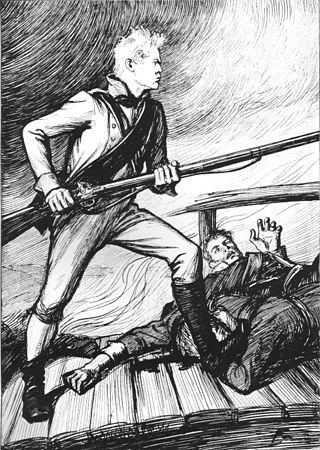
The Tales of Ensign Stål is an epic poem written in Swedish by the Finland-Swedish author Johan Ludvig Runeberg, the national poet of Finland. It was published in two cycles, in 1848 and in 1860. The poem describes the events of the Finnish War (1808–1809) in which Sweden lost its eastern territories; these would become incorporated into the Russian Empire as the Grand Duchy of Finland.
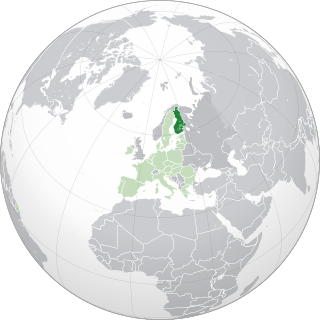
The history of the Jews in Finland goes back to the late 18th century. Many of the first Jews to arrive were nineteenth-century Russian soldiers who stayed in Finland after their military service ended. The two synagogues in active use today in Finland were built by Jewish congregations in Helsinki and Turku in 1906 and 1912, respectively. The Vyborg Synagogue was destroyed by Russian air bombings on 30 November 1939, the first day of the Winter War. Today, Finland is home to around 1,800 Jews, of which 1,400 live in the Greater Helsinki area and 200 in Turku. Finnish and Swedish are the most common mother tongues of Jews in Finland, and many also speak Yiddish, German, Russian or Hebrew. Since data collection began in 2008, incidents of antisemitism have been on the rise in Finland. The number of incidents are likely under-reported, as Finland does not have a systematic method for recording specific forms of hate speech that incite violence or hatred.
Carl O. Nordling was a Finnish born architect, urban planner and amateur historian. He graduated as an architect from the Helsinki University of Technology in 1939 and immigrated to Sweden after the end of the Continuation War in 1944. Nordling published an article on the Holocaust, How Many Jews Died in the German Concentration Camps?, in the Holocaust denial publication Journal of Historical Review.

Lovisa Adelaïde Ehrnrooth was a Finnish feminist and writer. Adelaïde Ehrnrooth was born in Nastola, one of the 16 children of an aristocratic family. She was born to Gustaf Adolf Ehrnrooth, a hero of the Finnish War. John Casimir Ehrnrooth was her brother. Adelaïde Ehrnrooth never married, and dedicated her life to helping the women and the poor.
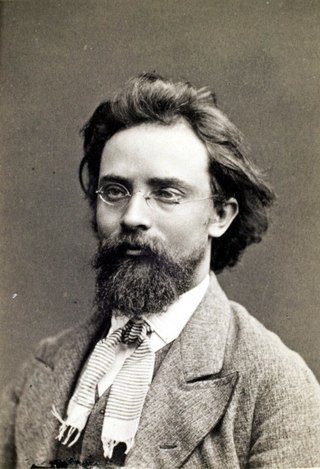
Walter Magnus Runeberg was a Finnish neo-classical sculptor. He was the son of Finnish national epic poet Johan Ludvig Runeberg.
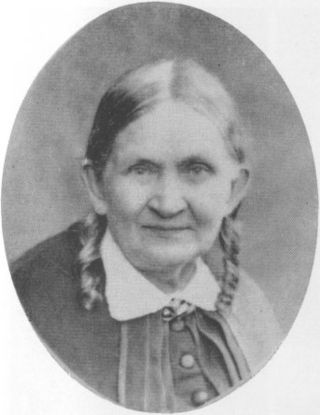
Fredrika Charlotta Runeberg was a Finnish (Finland-Swedish) novelist and journalist. She was a pioneer of Finnish historical fiction and one of the first woman journalists in Finland.

Sven Arne Runeberg was a Finnish anthropologist and linguist, best known for his studies on magic, witchcraft, and sociolinguistics.

Julia Stadius, née Tavaststjerna was a Finnish-Swedish writer.
Valvoja was a Finnish language literary and cultural magazine that existed between 1880 and 1922.

Kerberos was a Swedish language satirical magazine published in Helsinki, Finland, in the period 1917–1921. Its subtitle was Tidskrift för satir och humor.
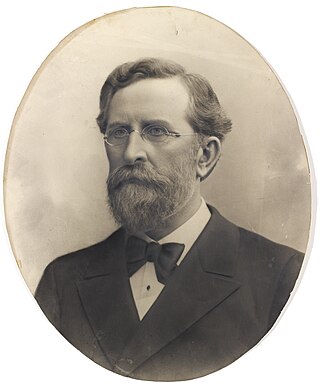
Karl Felix Heikel was a Finland-Swedish banker and politician. He was the son of priest and educator Henrik Heikel, brother of educators and Finnish Baptist pioneers Viktor and Anna Heikel, father of insurance director Estrid Hult, cousin of ethnographer Axel Heikel and philologist Ivar Heikel, and uncle of ethnologist Yngvar Heikel.
Tiden is a quarterly theoretical political journal published in Stockholm, Sweden, since 1908. It is organ of the Social Democratic Party. Its original subtitle was Tidskrift för socialistisk kritik och politik which is later changed to Socialdemokratisk idé- och debattidskrift.
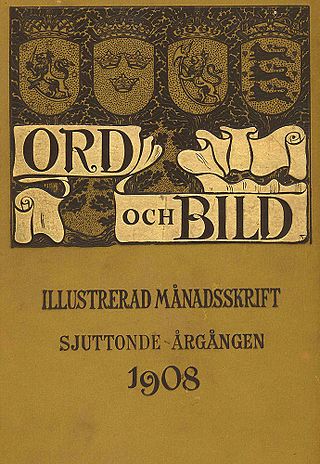
Ord och Bild, also stylized as Ord & Bild, is a cultural and literary magazine which has been in circulation with some interruptions since 1892. The magazine is headquartered in Gothenburg, Sweden, and its subtitle is Illustrerad månadsskrift.
Ultra was an avant-garde bilingual art and literature magazine which appeared in Finland in 1922. Its subtitle was tidskrift för ny konst och litteratur. Although it produced only eight issues, it played a significant role in the introduction of avant-garde literary approach in the region.
Quosego was an avant-garde magazine which existed between 1928 and 1929 in Helsinki, Finland. Like its successor Ultra, it played a significant role in introducing the avant-garde movement to Scandinavian countries. However, Quosego was much more inflential than its successor in terms of artistic and linguistic innovation. The subtitle of Quosego was Tidskrift för ny generation.
Det Bästa is the Swedish edition of the American Reader's Digest magazine. It has been in circulation since 1943. Its subtitle is världens mest lästa tidskrift.
Det Nya Sverige was a conservative political magazine published in Stockholm, Sweden, between 1907 and 1928. Its subtitle was tidskrift för nationella spörsmål.
Euterpe was a weekly music, theatre and literary magazine which appeared in Helsinki between 1900 and 1905. It was the first Swedish-language music-oriented magazine published in Finland. Its subtitle was Veckotidskrift for musik, teater och skönlitteratur.
References
- ↑ George C. Schoolfield (1998). "National romanticism- A golden age?". In George C. Schoolfield (ed.). A History of Finland's Literature . Lincoln, NE; London: U of Nebraska Press. p. 351. ISBN 0-8032-4189-5.
- ↑ "Intresset för Finsk Tidskrift är större än någonsin" [The interest in Finnish periodicals is greater than ever]. YLE (in Swedish). 10 March 2014. Retrieved 12 April 2017.
- 1 2 Dan Karlholm; Hans Dam Christensen; Matthew Rampley (2012). "Art History in the Nordic Countries". In Matthew Rampley; et al. (eds.). Art History and Visual Studies in Europe. Transnational Discourses and National Frameworks. Vol. 4. Leiden; Boston: Brill. p. 424. doi:10.1163/9789004231702_028. ISBN 978-90-04-23170-2.
- 1 2 "A champion of Finnish bilingualism". University of Helsinki . Retrieved 5 March 2020.
- ↑ "Frederika Runeberg". Finlander. Retrieved 12 April 2017.
- ↑ Jukka Kortti (2018). "Religion and the cultural public sphere: the case of the Finnish liberal intelligentsia during the turmoil of the early twentieth century". History of European Ideas . 44 (1): 102. doi:10.1080/01916599.2017.1402800. hdl: 10138/230911 . S2CID 149117943.
- ↑ Sanna Ryynänen (2023). "The representation of Jews in the Finnish press before the second world war". Ethnicities : 16, 18. doi: 10.1177/14687968231184632 .